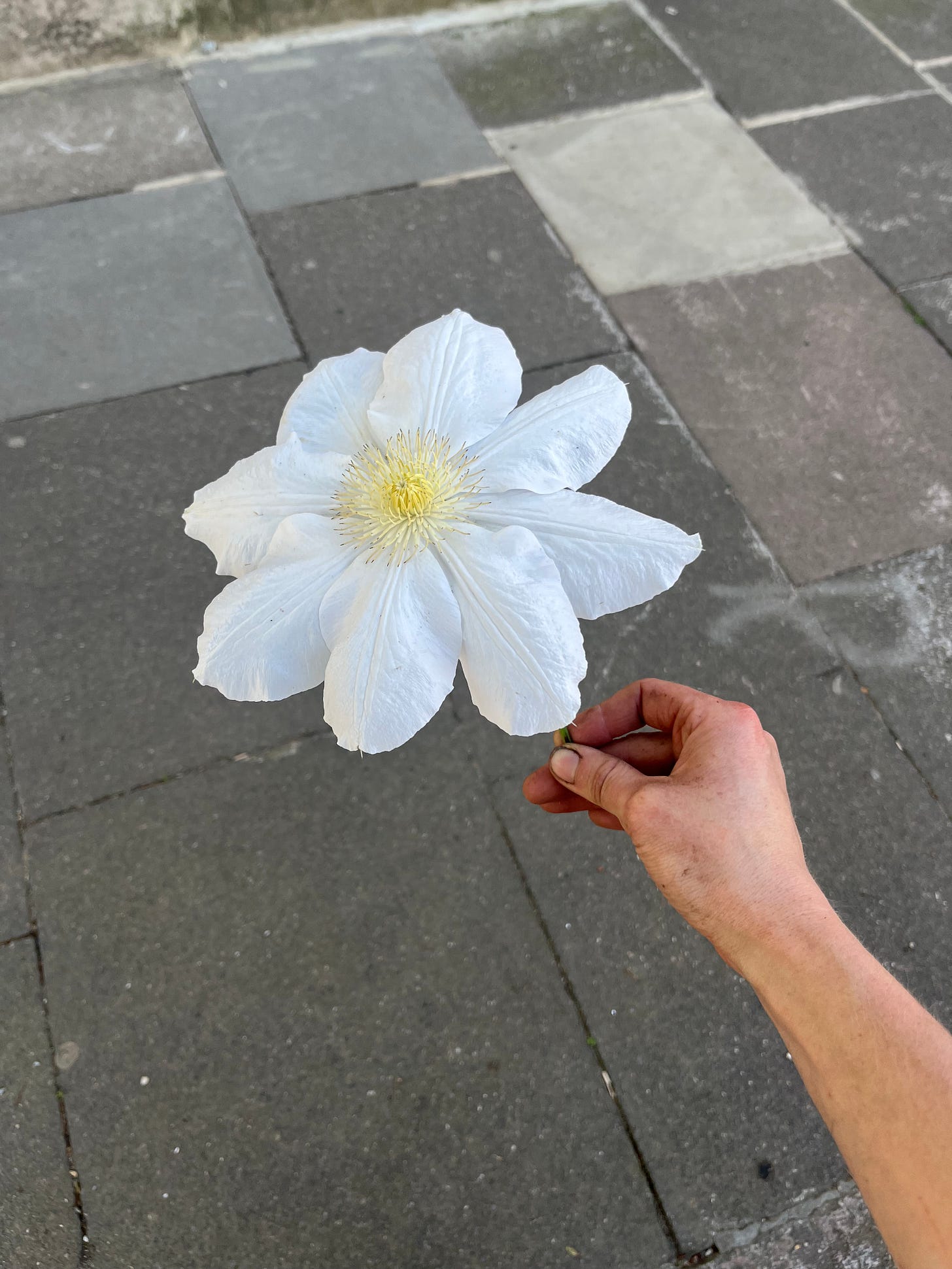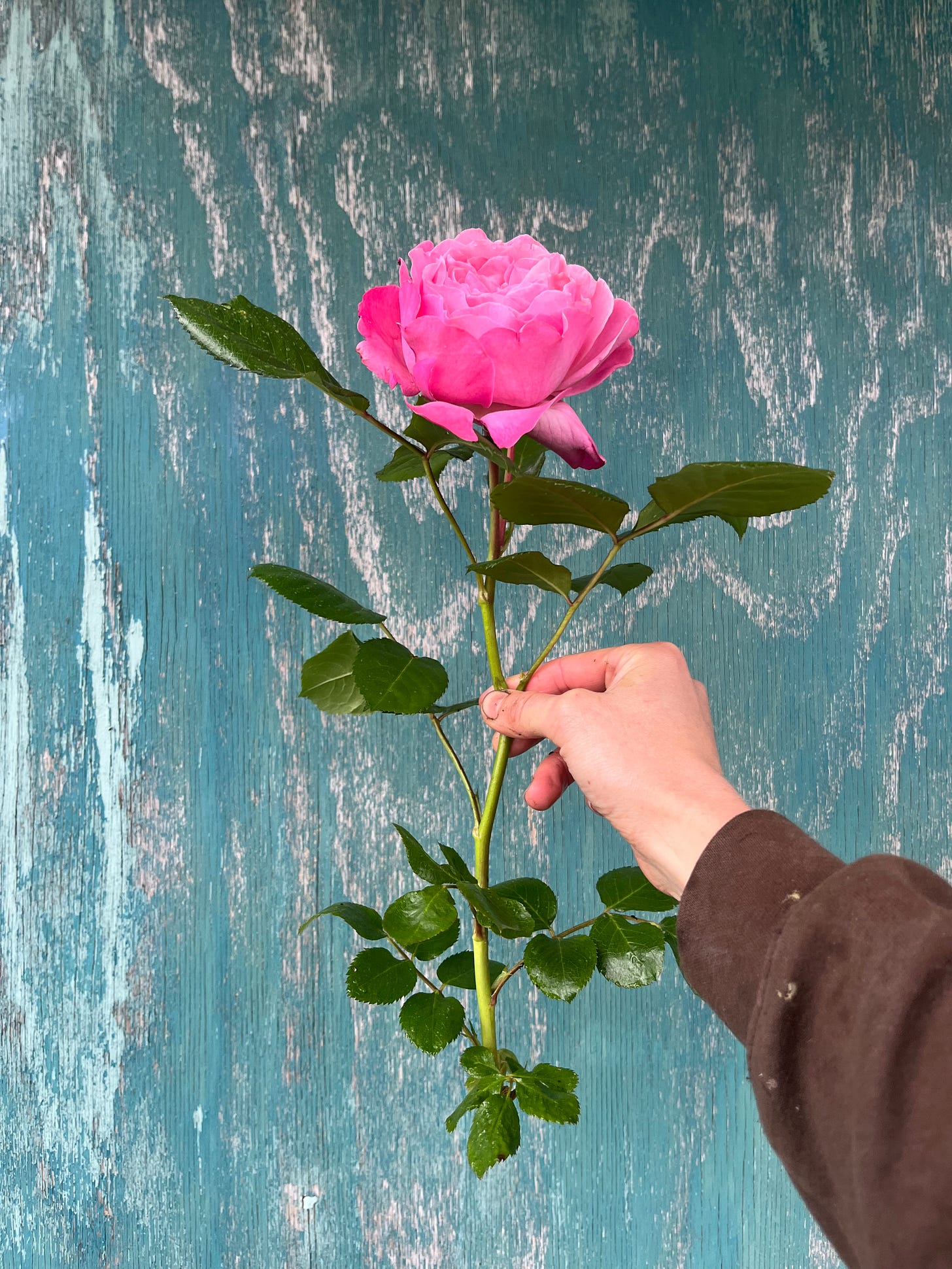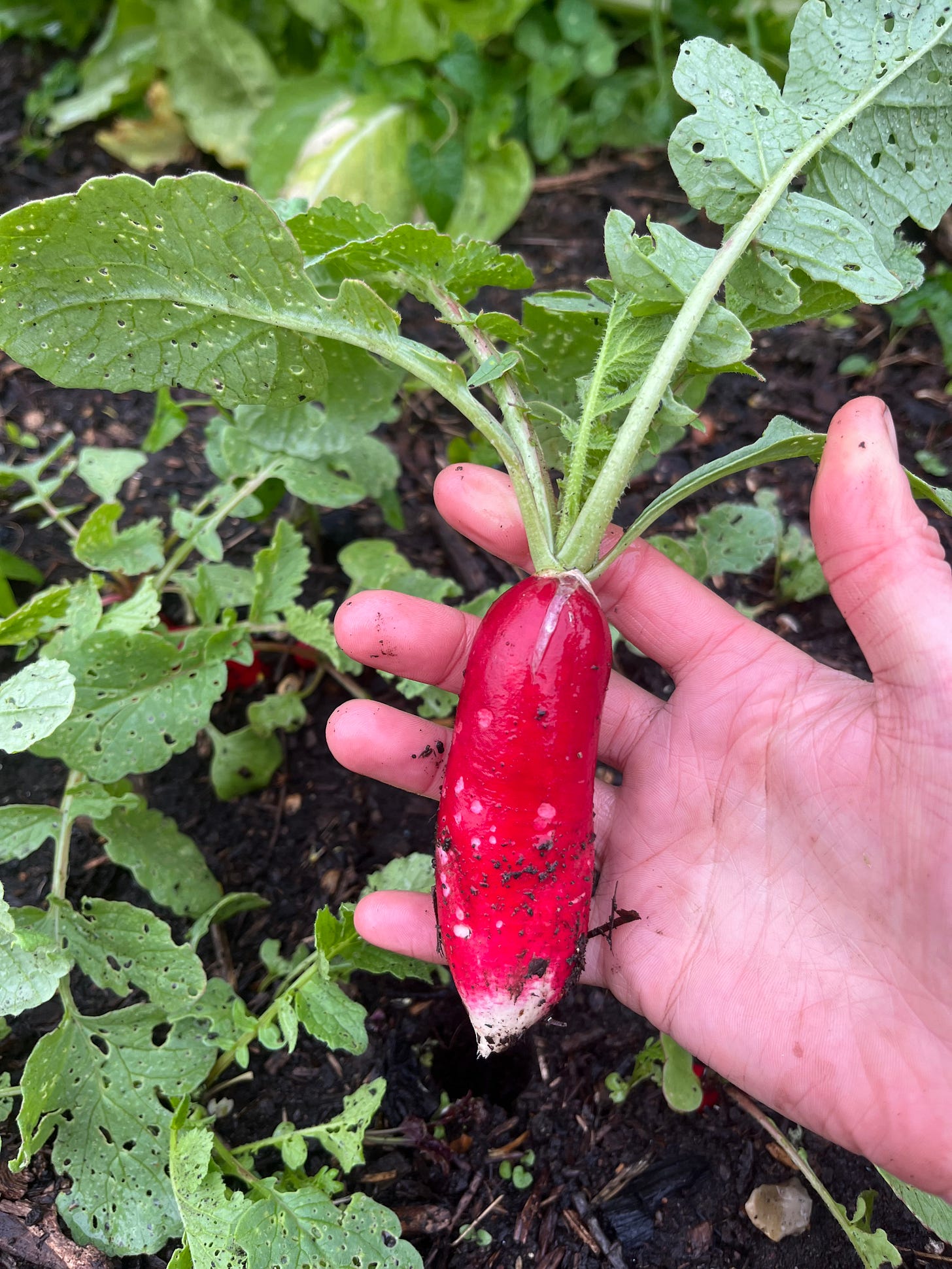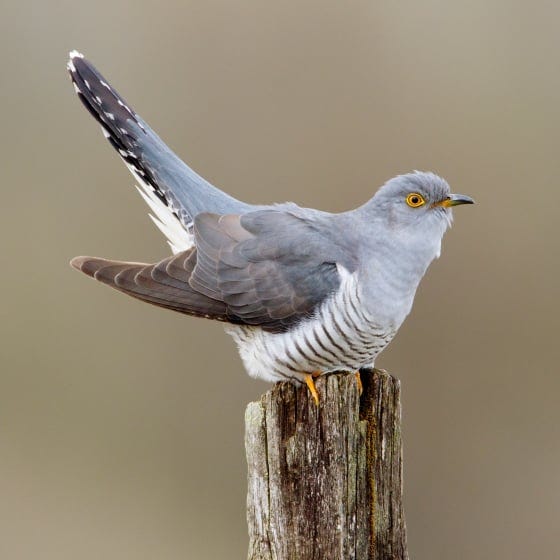I’m in France, staying in the countryside which looks over a valley full of trees. This morning I’ve woken up early to hear the birdsong - there are chiffchaffs, song thrush, chaffinches, tits, blackbirds, firecrests, and my personal favourite - the cuckoo. Please take a listen if you want to hear the most lovely combination of bird song.
Clematis 'Marie Boisselot'
Last week, I visited one of my regular gardens as usual and noticed my favourite clematis in flower.
This Clematis 'Marie Boisselot' which flowered last year, marks the beginning of my substack and now, indicates a year has gone by.
Nature provides seasonal markers and witnessing this crisp white flower allowed me to reflect on my personal growth.
This clematis is left to roam free and has climbed up a huge shrub. Each year it grows upwards - reaching and twining around branches, placing itself in an optimal sunny position before opening its flowers. Am I like the clematis, growing upwards each year?
Although the flowers on this climber look identical to last year’s flowers, they are fundamentally new and so am I.
This week’s highlights
Alliums
The alliums are here - hurrah! Great purple globes with tiny star like flowers are appearing, filling me with delight. I’ve planted a lot in my gardens, they are a great nectar source for pollinators, especially honey bees.
They have an extended flowering season, some lasting up to three weeks!
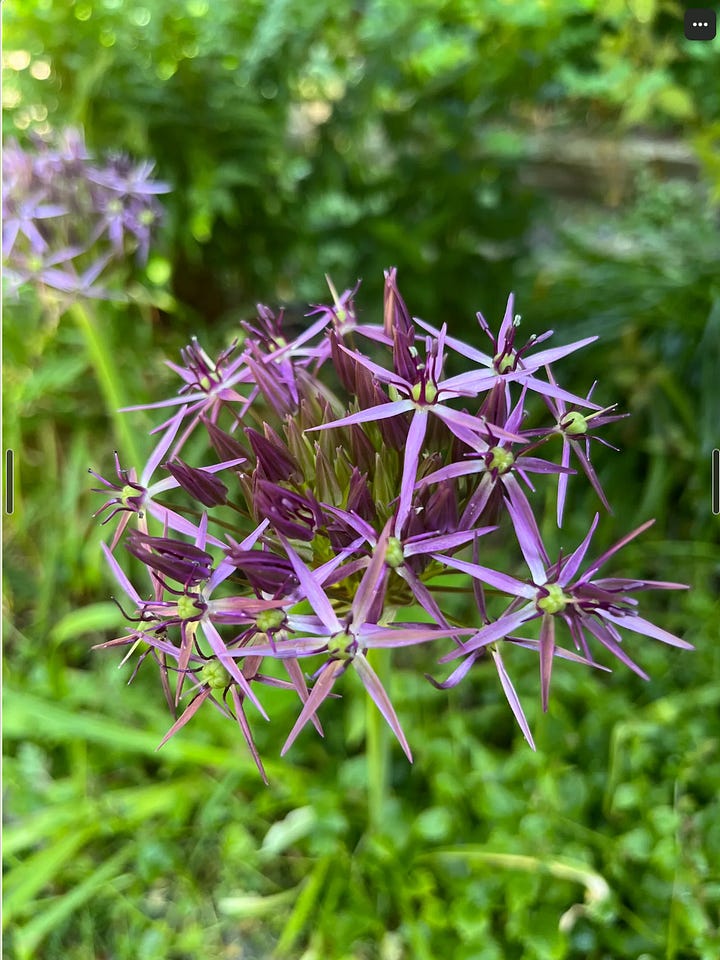
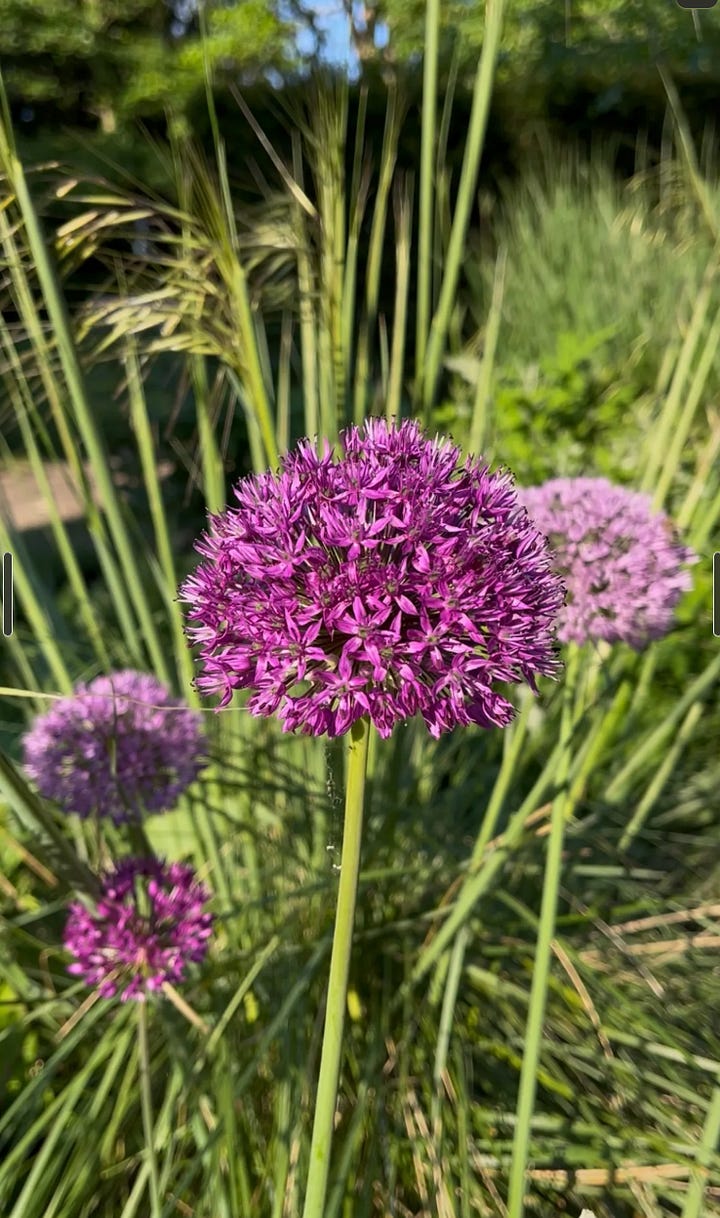
Rosa
The first roses are here! I always find the first rose of the season to be so plump and sumptuous.
Its petals are thick and lustrous and I couldn’t help but pick it!
I used to have a neigbour who would give away a lot of plants. It seems she would purchase plants in flower and once they had finished, leave them on the street for neighbours to take.
I gladly took this rose one morning and planted it at the allotment in my make-shift rose garden with little idea of what it was.
A lucky dip of roses…it’s clearly a hybrid tea and has a subtle scent - maybe Rosa ‘Desiree’? I personally wouldn’t choose a rose like this - a little too garish for my taste however I still enjoy it!
Wisteria floribunda f. alba
The white wisterias are in flower, I think this may be Wisteria floribunda f. alba 'Shiro-noda'.
They flower a little later than the classic purple, floribunda or sinensis. This wisteria photographed has been left unmanaged for around twenty years and had grown high up into the tree, flowering amongst the foliage.

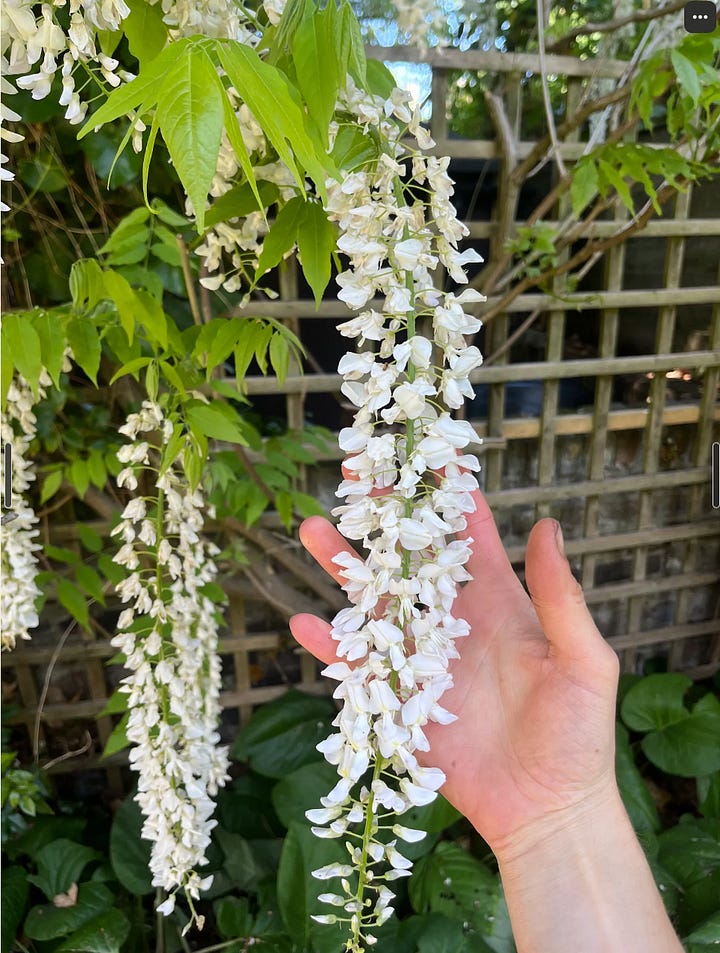
Do you ever imagine what the earth would look like if the human race went into extinction? Seeing this overgrown wisteria reminds me of the power of nature. We manage nature - keeping it tamed, pruning trees and climbers. Weed killers are sprayed on the streets and lawns are mowed.
However, if we weren’t here - wisteria would break through windows, trees would grow tall and mighty in the roads and slowly but surely, all concrete and brick would vanish, covered by greedy ivy.
Allotment
I harvested my first radish. I haven’t had much luck with radishes, last year the snails polished them off before they could grow.
This radish was crispy, crunchy and spicy - a real special moment to eat something that you’ve grown from the earth!
The Cuckoo - Cuculus canorus
My most treasured bird, I appreciate I say this about a lot of birds but I am quite taken by the cuckoo.
It has a bird of prey-like appearance, with a slender body, long tail and pointed wings. It’s feathers are grey-blue to brownish-gray with pale underparts and spotted feathers on its tail. Best of all, it has gorgeous yellow eyes.
The cuckoo lays its eggs in another bird’s nest, tricking it into raising its chicks as their own. Cuckoos often specialise in a particular host species (these specialisations are called gentes), and the females tend to mimic the egg colour and pattern of that specific host.
The cuckoo egg typically hatches earlier than the host’s eggs, due to a shorter incubation period, usually around 12 days. Once the cuckoo chick has hatched, it will instinctively push the host’s eggs or chicks out of the nest to eliminate competition.
The chick will mimic the begging calls and appearance of a brood of chicks to stimulate feeding. The host parents, unaware of the cuckoo’s trickery, continue to feed the cuckoo chick, even though it quickly grows much larger than them.
As the female cuckoo doesn’t have to build a nest or raise chicks, she can lay up to 25 eggs in one season, each in a different nest!
However, the cuckoo is sadly in decline….
Climate change is causing some birds to nest earlier in spring, and if host birds start breeding before cuckoos arrive, they miss the opportunity to lay their eggs in suitable nests.
They also need host species like meadow pipits, reed warblers, and dunnocks where they lay eggs. If these host species decline (due to habitat loss or climate change), cuckoos struggle to reproduce.
According to BTO, their migration path African wintering grounds has changed so we will see fewer of them in the UK.
British Trust for Ornithology are researching the cuckoo and tracking their movements - you can sponsor a cuckoo and you will be updated with any information that they learn!





